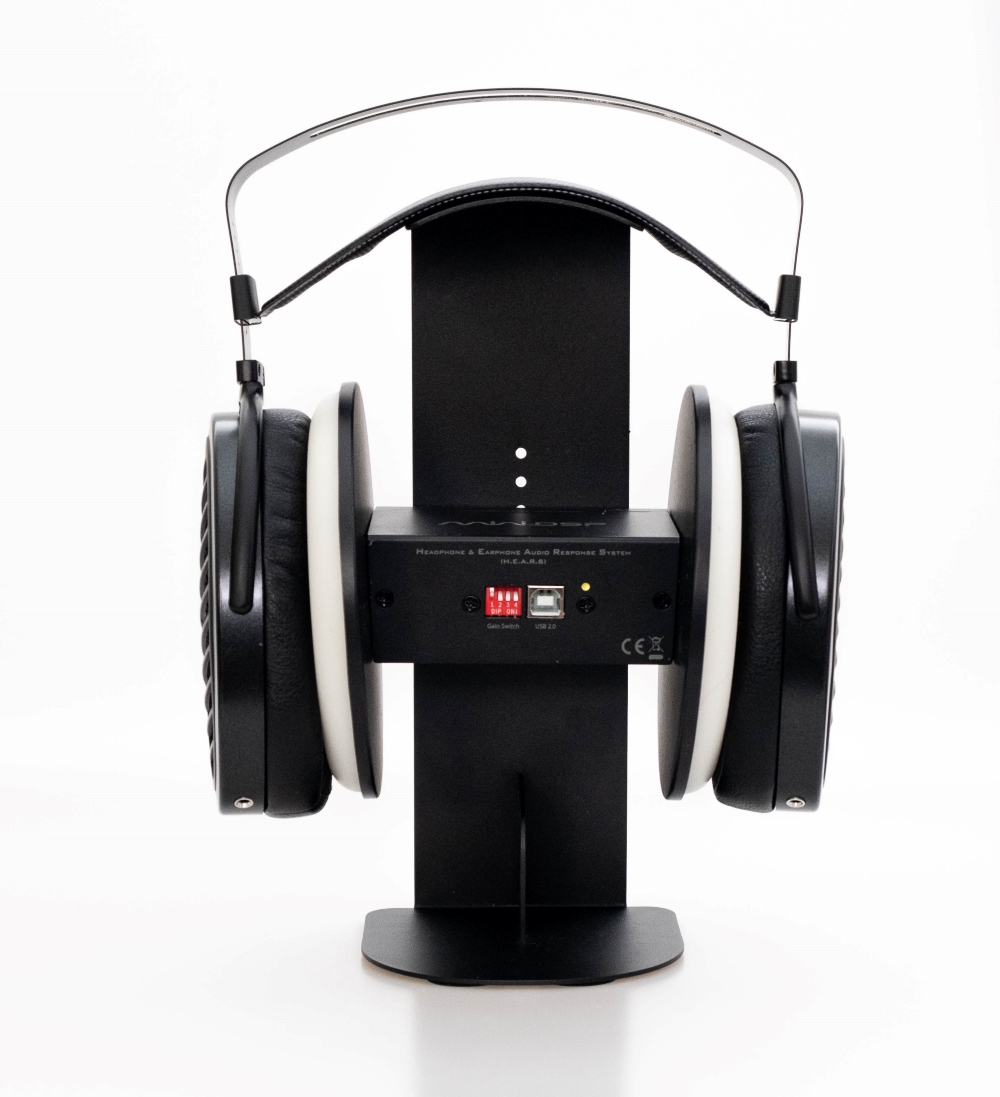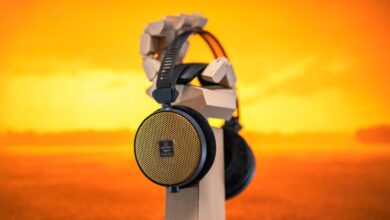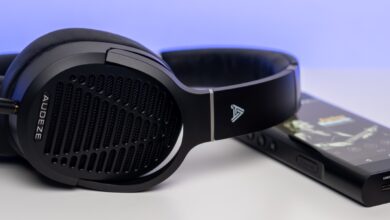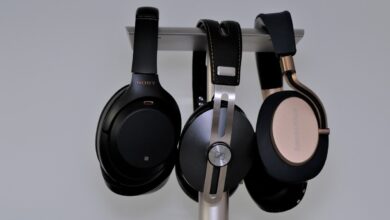Hifiman Arya Review – An Impressive Technical Achievement

Disclaimer: Hifiman Arya were sent to us as a sample in exchange for our honest review. We thank team Hifiman for this opportunity.
My video review:
Doing reviews for good sounding headphones is easy-peasy they said, just hype them as much as you can and all will be good they said, roses are red violets are blue they said. What a bunch on non-sense! Actually, doing reviews for expensive and top-notch headphones is much, much harder to do since you need to carefully pick your words, not to mention excessive amounts of listening tests, comparisons, measurements and leaving plain subjective opinions.
The moment Hifiman Arya arrived at my door my mood was really low, spirits were not kind to me this past few days, don’t know why. I started casually listening to them with a slight headache and sincerely I was so low on inspiration that my expectance level was even lower, I didn’t think they can surpass my all-time-favorite Quad Era-1 headphones. About 5 minutes passed and I already started doubting my thoughts, another 5 minutes passed and I was already sweating, 5 more and I was angry that they just might sound better. I started bargaining and added more music to my playlist. After a painful one hour of switching back and forth my depression left me and I accepted the fact that Arya is just in completely another league. Yes, my friends they are sounding better on almost all aspects, all of that in due time.
A long time have passed since I listened to an excellent sounding pair of full-sized headphones and even a longer time passed since I tested a pair of Hifiman planar-magnetic headphone. Hifiman is not new to this game and can be considered veterans in terms of planar-magnetic technology. Arya comes from their third-wave of planar-magnetic headphones and even borrows some technology from their highly regarded and much more expensive HE1000 V2.

Unboxing experience & Package contents
Hifiman Arya came double boxed for a very good protection. First card-board box has some foam inside to protect the second – headphone box. The second one that houses the headphones themselves looks pretty nice with this matte black painting on it. Opening up the box reveals a beautiful sight since Arya are sitting comfortably in a silky fabric surrounded again by lots of foam underneath it and on top of it.
The headphone cable that comes with it should resist a lot of use and abuse, it is also very flexible, besides that one, there is also a warranty card with the serial number stamped on it and a very detailed 26-page user-manual that I really recommend checking it out. That is basically it, I would personally like to have a hard carry-case instead on the headphone case that is not as practical while traveling, but maybe that is just me.

Looks & Build Quality
Design wise I think Arya are looking quite handsome with this elongated and huge ear-shaped cups. There isn’t another headphone manufacturer that uses the same XL-sized earcups. They are basically hugging your ears and the pressure is close to zero, coming back from a pair of Audeze headphones it is like you have nothing on your ears.
Weighting just 404 grams (14.3 oz) it is among the lightest planar-magnetic headphone I put my hands on. Arya has a clever weight distribution mechanism that is mostly relying on two things: on the super-wide and extra-large headband that is already evenly applying pressure on the top of your heard and it is also relying on the huge and soft ear-pads that will absorb side pressure. In my opinion Arya are among the least head-crunching headphones I tested so they are scoring great marks in terms of comfort.
The headphone structure is mostly metallic except for the ear-cups that are made out of hard plastic, very similar build to that of Jade II. It is also a first for me this very open “Window shade” system, almost exposing the drivers to the outside world. Arya are as open in terms of headphones as it can get, as you basically see the magnets structure and the planar-magnetic driver assembly. This very open approach was important for achieving a really open and extra-transparent sound.
The ear-pads can be considered a hybrid design since the inner and outer material is pleather to retain all that impact and high sound pressure level, only the part that touches your cheek is a soft fabric material so the air can move in and out between the driver and the ear. I really like this approach since I am sweating with leather-only Audeze ear-pads and I am not with Arya ear-pads, very cool approach.
The suspension mechanism might look like that found on Meze’s Empyrean or 99 Classics that is naturally distributing the weight once you put them on your ears but on Arya you are manually adjusting the right height setting and comfort level. I am not too bothered by that, since it is a one-time set and forget adjustment.
Of course, the cable is detachable, thanks god they abandoned old-style screw-type plugs and chosen simpler 3.5 mm plugs. The cable is super flexible and has a fabric outer jacket, it is terminated with a 6.35 mm (1/4”) jack. It doesn’t have any microphonics when it touches my clothes so that is always a very good sign. Seeing the cable quality, I don’t think many of you will upgrade it to something better, it is already a nice quality one.
I really dig the oval shaped cups and the overall design of them. The only cons I have in terms of build quality are the pleather ear-cups, pleather headband and the plastic cups.

Technology inside
Well, first of all Hifiman Arya is a planar-magnetic headphone that uses an advanced asymmetrical magnetic system. In simpler words it means it uses smaller magnets on the ear side and huge magnets on the outer side that are pushing a lot of air. This way the sound waves interference is greatly reduced, so the total harmonic distortion is reduced as well.
Hifiman developed their 3-rd generation Nanometer Thickness Diaphragm with a submicron thickness conductor. In short this is a very thin diaphragm but also a very rigid one, it should resist a lot of stress and in the same time it should playback all the smallest details from the recordings.
Remember the “Window Shade” system I was writing about that created this see-thought magnet and driver structure? This kind of design was implemented to have the widest possible soundstage and an impressive transparency.

Sound Performance
Open, spacious, enveloping, holographic and very dynamic were my first thoughts. That was the moment I realized my favorite Quad ERA-1 are much more closed-in sounding and will be dethroned really soon. I’m a big believer in planar-magnetic design and no matter what happens I should always have a pair with me, be it Quad, Audeze or Hifiman. I can count all the minuses Audeze and Quads are having, I can identify them with me eyes closed but I can’t say the same about the Arya, because nothing really stands out too much but in the same time everything is at its place, I felt it sounded just right from the moment I pressed play.
It sounded super extended on both ends, I love open-back headphones since they have the airiest performance, the widest stage and the best transparency. The biggest drawback of open-back design is of course the bass performance as it always gets a hit. Only very few open headphones are having a real sub-bass performance that can reach 20 Hz levels. Quad Era-1 was such an example that I cherished and loved.
When I listened to my favorite tunes, I couldn’t believe that Arya shown me even more bass information and additional bass layers. Sub-bass was something that needed to be heard to be believed.
Overall, Arya sounded so linear and right that I had this urge of measuring them immediately and this is exactly what I did.
I. Measurements
I used a Matrix Audio Element X as the source, Benchmark HPA4 as amplification and MiniDSP E.A.R.S. as the measuring rig for the Hifiman Arya.
I used the original headphone compensation (HPN) for this particular E.A.R.S. serial number. I ran multiple measuring tests with and without smoothing and here are my results.
.png)
A complete straight line from 20 Hz to 1Khz and just a small deviation in the treble area that is just normal behavior.
Now look when I am applying a 1/12 smoothing, look at that channel balance, it is simply incredible, only at about 17 kHz there is a slight channel imbalance. I thought this was a cherry-picked pair for me, but no, this is a normal Arya, nothing special was sent to me. This kind of measurements are quite impressive but are expected at this price point. My Quad ERA-1 and Sennheiser HD660S are measuring much worse in terms of FR.
.png)
Running a water-fall plot revealed this impressive reading, in terms of frequency response Arya is absolutely close to Perfect and is considered reference even at this price point. This water-fall shows the only con Arya is having and that is the decay of the bass, is it a bit slower than the rest of the spectrum.

I think it is time we dissect the frequency response.
II. Bass
Everyone who read or watched my Quad Era-1 review probably understood how much importance I give to sub-bass performance and I don’t mean muddy bass-head performance. I crave for fast executed bass that slams hard and most importantly that reaches Mariana Trench levels, like 20 Hz.
In this regard, from all open-back headphones I tested in the past, Arya has the best sub-bass performance. It is like listening to full-range stand-floor speakers.
I immediately fired my usual bass tracks and was a bit shocked, listening to The Prodigy – Invisible Sun, even at 10 second mark my ears already started waving and at 0:42 mark bass reached the 20 Hz mark that until now only full-range speakers were doing it for me.
Moving on to mid-bass it is done super smooth and in a very natural way. Again, as the sub-bass, the mid-bass is very present, controlled and has tons of layers. Even listening to simpler tracks like Pink Martini – No Hay Problema, I felt that contra-bass (double bass) sounded so real and controlled. I felt its texture, I felt the wood and felt it going down with so many layers to it. Such an amazing performance and it really wakes up your imagination.
Bass notes on every track felt transparent, very clean and precise, just a right amount of presence, attack and slam. It was never too much (how it can sometime be on Quad Era-1) and never too soft (how Audeze are playing it), somewhere in the middle. This is a top-level sub-bass and mid-bass performance.
You should also know that Arya has a linear bass performance, so if you craving for a bass-canon headphone this will not be for you but if you craving for a clean, transparent, detailed, layered and linear bass response – then this is for you.

III. Midrange
This is what I am calling a typical planar-midrange as it is always sweet, musical, very enveloping but never overdone. It is neither too up-front or too laid-back, just perfect.
I felt this urge to listen to some old Jazz and moments later Dave Brubeck and Django Reinhardt were already singing sweet songs to me. How would you describe a life-like presentation that just breathes and never draws attention to it? This is basically how Arya is sounding in the midrange department.
Exactly like was the case with the bass notes, midrange is very transparent, it is super airy and linear sounding. I really like that voices are super outlined and textured, you can feel the vocal cords vibrating, don’t get me started with guitars and violins, let’s just say that they sounded just right from the get go.
Upper midrange sounded meaty and heavy, male voices sounded really imposing as they moved much more air around the room. Listening even to Leonard Cohen can send shivers right down your spine.
This is not your creamy, overdone, or dry midrange, nothing like that.

IV. Treble
Moving into the treble area I was prepared to hear a little bit of brightness but luckily with Arya that never happened as they have an excellent treble performance. Hifiman is specifying an 8 Hz to 65 kHz frequency response, sadly my measuring rig can’t go higher than 24 kHz, but up to that number treble is measuring really good and sounds as good. And yes, it goes past 20 kHz into the sub-sonic area where we can’t hear it but somehow, we can feel it.
There is a slight drop in the 4 kHz area that I consider insignificant, a 4 dB drop is Ok for a natural treble performance. I consider the treble performance of Arya excellent since it never rises above the bass and midrange level and truth to be told there are very few headphones that can do that.
As a result, treble is also airy, extended and detailed. Listening to some fast drum solos I was happy to hear clear and real cymbals, I was hearing its start and finish, not a single blob of muddiness. Treble is also biting and has a lot of presence and detail; however, it is never bright/harsh sounding.
In terms of frequency response this is among the best open-back headphone I had the pleasure of listening.
V. Transient Response
Truth to be told this is the only area where I think Arya is not performing top-notch but still quite good. The water-fall plot is also strengthening my claims, especially in the bass area.
Arya are still having a good thump and slam; it is just not on the same level with the best. Attack is good and speed of delivery is also good but slam and impact lacks a bit. They sound mighty good with normal paced and slower music, and just good with fast-paced electronica. I still very much enjoyed my time with fast metal or electronica, don’t get me wrong, it just didn’t knock me out of my chair.

VI. Soundstage & Depth
In terms of soundstage and depth, Arya with its huge driver assembly and with its window shade system sounds impressively open wide and deep. Mariana Trench deep? Yep, that deep.
Listening to Sara K – If I could Sing Your Blues I can swear I am having a cigar at a live performance, that trumpet sounds so far away from me it is like coming from outside my room, it sounds detached from the rest of the instruments, I am really curious how they achieved that.
Arya can push a lot of air and that is very apparent with basically any music you throw at them, the air bubbles between the notes are really huge that I can appreciate any note, its shape and texture. In regards to soundstage this is as open as it can be, with the right music it can be mesmerizing.
VII. Detail Retrieval
I like that Arya is showing all that important micro-detail information but in a non-aggressive way. Very non-Sennhseiser-HD800-like but natural somehow. It plays every small micro-vibration and detail but doesn’t scream: Look At Me How I Do It!
Paired with Matrix Element X and powered by the extra-detailed Benchmark HPA4 any air-mass moving around and every single tiny detail can’t hide away from Arya. Yes, Arya is very detailed and renders even tiny dynamic swings with ease.

VIII. Dynamics
From the moment I started listening to Arya I knew they have something different from my other two headphones and that is dynamics. The difference between a low intensity sound and high intensity one is very big, so much that I needed to readjust the volume once per song. They possess better dynamics even than my Quad Era-1, which already did impressive in terms of dynamics.
Listening to some high-quality electronica can be really a mind-blowing experience. I’m having goose-bumps listening to such tracks and coming back from Quad Era-1 is quite hard being impressed by dynamics of other headphones.
IX. Power Requirements
Having a sensitivity of just 90 dB per 1mW at 35 Ohms, Arya are considered hard to drive. It is the hardest to drive headphone I have right now at my place. I need about 9dB higher volume setting on the HPA4 than my Quad Era-1 and about 11 dB higher than my Sennheiser HD660S so be careful about headphone amp matching. However, if your amp is up to the task, Arya will shine with impressive dynamics, wide spread soundstage and gobs of control and grip. Sadly, a portable source can’t make them truly sing, the pocketable FiiO M11 will bottleneck its performance, even my Headamp Pico Power is not quite up to the task. Volume wise Pico Power is Ok on the high gain, but dynamics are not impressive anymore and Arya will sound more closed-in.

X. Matchability
Since Hifiman Arya are very neutral with no particular dips or rises I really recommend a linear source and amplifier. A warm or dark sounding source and amplifier will work as well. I would probably stay away from loose, slow, bright sources and amplifiers. They worked fine even with a hybrid tube-based xDuoo TA-10, but transient response took a hit as it is making them looser sounding.
Of course, best results I achieved from the Benchmark HPA4 followed by Aune S7 PRO and the rest. Out of the Matrix Element X headphone out they again lacked in dynamics and overall enjoyment level. Arya is craving for a dedicated and juicy headphone amp that could offer them a lot current for goose-bump inducing dynamic swings.

Comparisons
Hifiman Arya ($1600) VS Quad ERA-1 ($800)
I will skip the boring stuff like the build quality and package contents. Arya is double the price of Quads and once you listen to them you will understand why.
Arya is offering at least one or two additional layers of dynamic range; Arya is having more micro-detail information and even an additional layer of sub-bass. In terms of treble performance Arya is completely in another league since it will render even sub-sonic information and has a much better upper-treble performance. There is a drop in the lower treble on the ERA-1 that makes them really easy-going and somehow smooth sounding. ERA-1 will not punish you as much if you are listening to lower-quality material, Arya will show everything be it good or bad.
Arya is also sounding more open, wider, more holographic and really envelops your head, ERA-1 is a bit more up-front sounding.
There is just one single thing that Quad ERA-1 is doing better than Arya and that is the slam. ERA-1 hits harder, on rock and electronica it can be too much at times, it will tire you down in the long run. If Arya would have the same slam and kick it would be the perfect headphone for me.
There is no point in comparing the Arya to HD660s since they will just obliterate them in every possible way.
Conclusion
A lot of time has passed since I heard a close to perfect headphone. The linearity and true to the recording nature of Arya of mind-boggling. Not only because it will please a vast majority of listeners, but because searching for a perfect mate in terms of amplification becomes much easier. Choose a super linear amp that offers gobs of power like the newest Headamp GSX Mini or Aune S7 Pro and you are good to go.
In terms of sonics there is almost nothing to complain about them. Hifiman had a really long way in planar-magnetic design and all those years of experience paid off bit time. Hats off to Hifiman for this impressive technical achievement!
Hifiman Arya can be yours for $1600 and you buy it directly from their web store.
PROS:
- Excellent comfort levels, you almost don’t feel them on your head
- Nice fit and finish, love the huge ear cup design and ear-pad material
- Impressive depth and pin-point imaging, very easy to focus on any note
- Open wide soundstage, most transparent sounding
- Airiest open-back planar-magnetic headphone I’ve tested
- Linear and neutral as a straight line
- Super extended in the sub-bass and sub-sonic treble regions
- Among the best dynamics a headphone can have
- Excellent detail retrieval
CONS:
- Plastic cups, pleather headband and ear-pads
- Not that easy to drive
- Slam is good but not the best
ASSOCIATED EQUIPMENT:
- DACs: Matrix Audio Element X, Matrix Audio X-Sabre Pro, Mytek Brooklyn DAC+, KECES S3, Burson Swing
- Headphone amps: Benchmark HPA4, Aune S7 PRO, Erzetich Bacillus, Headamp Gilmore Lite Mk2
- Full-sized headphones: Hifiman Arya, Quad ERA-1, Sennheiser HD660S
- Loudspeakers: KEF LS50W
- Interconnects: QED Reference XLR, Aune AL3 XLR
- Power Cables: Isotek EVO3 Premier
- Balanced Power Conditioner: PLiXiR Elite BAC 400, KECES BP-600







